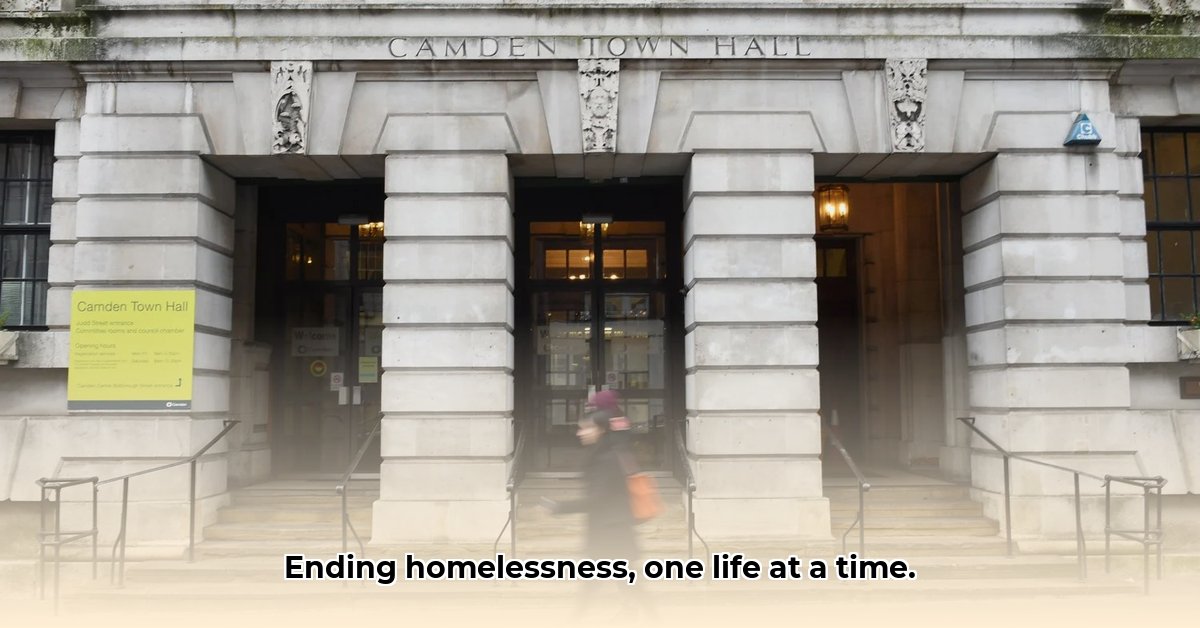
Project HOPE Inc. in Camden, New Jersey, is a vital healthcare provider for a profoundly underserved population: the city's homeless. This article examines Project HOPE's significant impact, the challenges it faces, and actionable steps to ensure its continued success in addressing the critical healthcare needs of Camden's homeless community.
Project HOPE's Impact: A Lifeline in Camden
Since its inception, Project HOPE has provided comprehensive healthcare services to thousands of individuals experiencing homelessness. In 2018 alone, they served over 5,300 individuals, offering a holistic approach that addresses medical, mental health, and addiction needs. This integrated model, encompassing basic medical care, mental health services, opioid addiction treatment, and crucial case management, is crucial because it acknowledges the interconnectedness of physical and social wellbeing within this population. "Our integrated model recognizes the unique challenges faced by homeless individuals," explains Dr. Anya Sharma, Chief Medical Officer at Project HOPE. "It’s not just about treating illnesses; it's about addressing the root causes contributing to their vulnerability."
How can a single location address such an enormous need? Project HOPE’s success stems from strategic partnerships. Collaborations with organizations like Camden Area Health Education, The Bridge, and Cathedral Kitchen create a seamless network of care, ensuring that patients receive consistent support across various needs. This coordinated effort is vital for breaking down silos and improving the effectiveness of services for a particularly difficult-to-reach population. This collaborative approach, as Dr. Sharma notes, "is fundamental to our success—it eliminates fragmentation and ensures holistic, patient-centered care". Isn't the comprehensive nature of this approach remarkable, given the fragmented healthcare system that many homeless individuals typically encounter?
Challenges and Opportunities for Growth
Despite Project HOPE's remarkable achievements, significant challenges persist. The estimated 8,000 homeless individuals in Camden present a substantial need that consistently outpaces available resources. Securing stable, long-term funding remains a critical hurdle, hindering their ability to expand services and meet the growing demand. How can we overcome this funding gap to bring essential care to more individuals?
Another challenge lies in the inherent difficulties of providing consistent care to a highly mobile population. Patient retention becomes a critical issue. However, these challenges are also opportunities for innovation and expansion. For example, embracing technology such as telehealth could offer a solution to the accessibility difficulties for this population.
Actionable Recommendations: Charting a Course for the Future
To strengthen Project HOPE's impact and ensure its long-term viability, several strategic actions are necessary:
Short-Term Goals (within the next year):
- Aggressive Fundraising: Implement innovative fundraising strategies to secure additional funding, including improved financial transparency to attract a wider range of donors. (Target: Secure an additional $500,000 in funding).
- Data-Driven Improvements: Implement robust data collection systems to track patient outcomes and program effectiveness. This will allow for evidence-based adjustments in service delivery and program design. (Target: Implement data tracking across all services by Q4 2024.)
- Service Optimization: Streamline existing services to enhance efficiency, maximizing the impact of resources and minimizing bureaucratic barriers to patient access. (Target: Reduce average wait times for appointments by 25%).
Long-Term Goals (over the next three to five years):
- Program Expansion: Gradually expand services based on data-driven insights, potentially including increased staffing and facility expansion. (Target: Increase patient capacity by 50%).
- Funding Diversification: Diversify funding sources to reduce reliance on any single donor, exploring new partnerships and collaborative grant applications. (Target: Reduce reliance on any single funding source below 30%).
- Targeted Outreach: Develop strategic outreach programs to proactively engage with individuals within the homeless population who might be unaware of Project HOPE's services. (Target: Reach 75% of estimated homeless population within 5 years)
- Telehealth Integration: Explore telehealth capabilities to broaden service reach, particularly to those with mobility limitations. (Target: Implement telehealth for at least 2 major services within 3 years).
Conclusion: A Partnership for Change
Project HOPE serves as a critical lifeline for Camden's homeless population, demonstrating the extraordinary impact of holistic, integrated healthcare in a highly vulnerable community. By addressing the challenges and implementing the recommended strategies, we can ensure the continued success of Project HOPE and its remarkable work in transforming homeless healthcare. The collective effort of funders, policymakers, healthcare professionals, and the community is essential to achieve this shared vision of a healthier Camden.